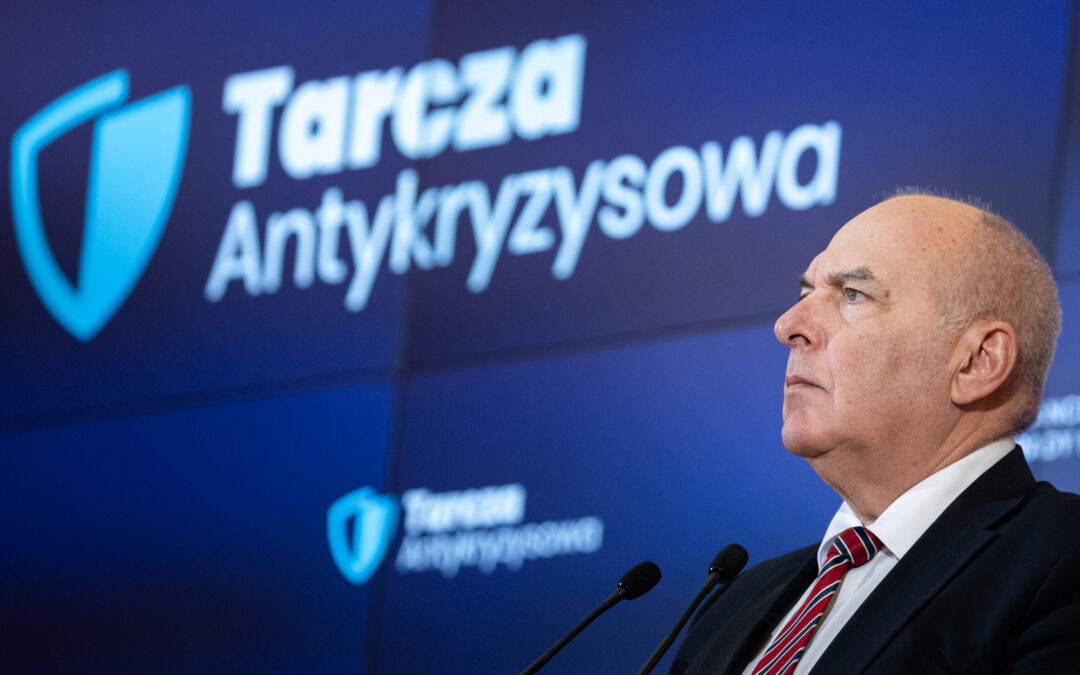Poland’s state auditor has found that the government used “unprecedented mechanisms” to spend more than rules on public debt allow during the pandemic, thereby reducing budget transparency.
An economist has also accused the government of “creative accounting”, saying that Poland has the second-highest level of understated debt in the EU.
Poland’s constitution caps debt at 60% of GDP, and by law the government must take precautionary measures once it passes 55%. In its report, the Supreme Audit Office (NIK) estimates that, if expenditure during the pandemic was fully accounted for in the budget, public debt would have exceeded 55%.
“Actions aimed at avoiding the warning threshold mean that there is no need to implement solutions stabilising public finances,” said Anna Rybczyńska, presenting the report on behalf of NIK.
Marian Banaś, head of NIK, said that his body’s analysis showed that last year the government had “used unprecedented mechanisms to push expenditure beyond the budget”. He emphasised that clarity and transparency were “lacking” from budgetary management.
NIK’s analysis, which spans nearly 400 pages, lists methods including transferring treasury bonds free of charge to various entities (such as the Polish Development Fund), accounting funds earmarked for 2021 as last year’s expenses, and limiting indexation of pensions (casting doubts over additional annual pension payments).
Sławomir Dudek, chief economist at the Civil Development Forum Foundation (FOR), a liberal think tank, says that public debt could be understated by 220 billion zloty (€48 billion) and the deficit by 100 billion zloty (€22 billion). He estimates this to be the second-largest relevative divergence in the EU, behind only Cyprus.
Like all other member states, Poland is obliged to report its public finances to the European Commission. “But the results reported by the Polish government are divergent,” Dudek told Money.pl, a financial news service.
“Some say that it was necessary to save companies and act quickly, but Covid does not justify creative accounting and bypassing public finances,” he added.
Budżet państwa powinien być przejrzysty przede wszystkim dla obywatela, a nie tylko Komisji Europejskiej i agencji ratingowych. Tymczasem mało kto nawet wie, że budżet to tylko 1/3 sektora finansów publicznych – mówił @DudSlaw w debacie @NIKgovPL ⤵️https://t.co/0gHLwFabYg
— Forum Obywatelskiego Rozwoju (@FundacjaFOR) July 8, 2021
NIK also found that in 2020 Poland recorded its highest ever discrepancy between the debt of state and local government institutions as well as the treasury’s public debt (at 224 billion zloty).
The reason for the divergence is that most COVID-19 relief mechanisms were spent by government institutions that do not contribute to national public debt accounting (but feature in estimates using EU methodology).
NIK has submitted its analysis to parliament to serve as a basis for the evaluation of public expenditure. “Citizens have the right to know how public money is spent and, in particular, the methodology used to calculate the state budget deficit”, added Banaś.
The head of NIK has for some time been locked in conflict with the Law and Justice (PiS) government, in which he previously served as a minister.
In recent weeks, Banaś has notified prosecutors of suspected crimes by PiS chairman Jarosław Kaczyński, as well as the prime minister and three other members of the cabinet.
Banaś has himself been investigated by anti-corruption authorities over his personal assets, including a property that was reportedly used as a brothel. He has also been investigated in connection with his subordinates in a previous role at the finance ministry, who have been charged with VAT fraud.
Main image credit: Adam Guz/KPRM (under CC BY-NC-ND 2.0)

Maria Wilczek is deputy editor of Notes from Poland. She is a regular writer for The Times, The Economist and Al Jazeera English, and has also featured in Foreign Policy, Politico Europe, The Spectator and Gazeta Wyborcza.




















